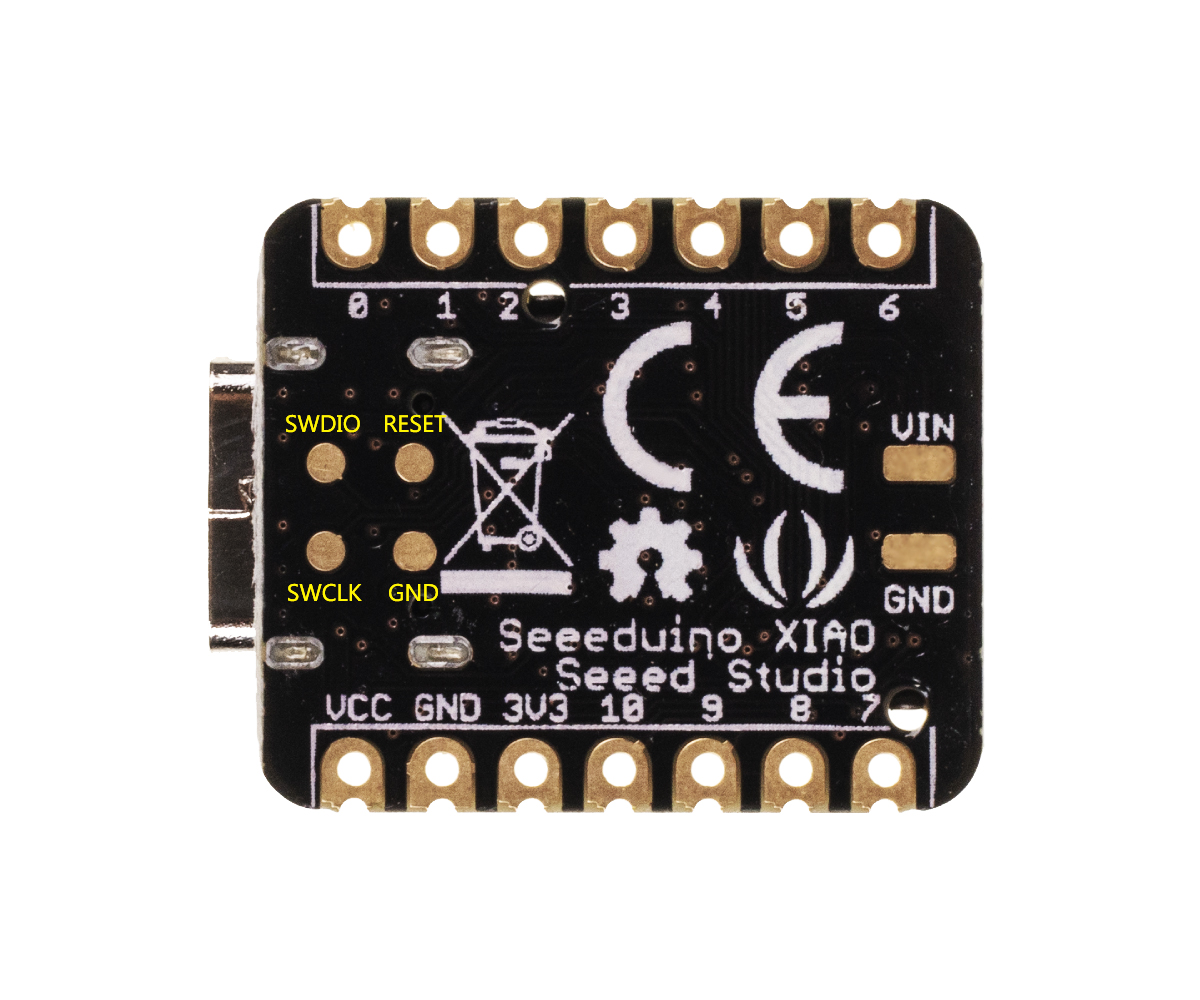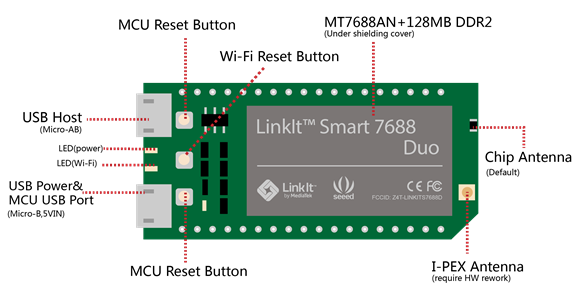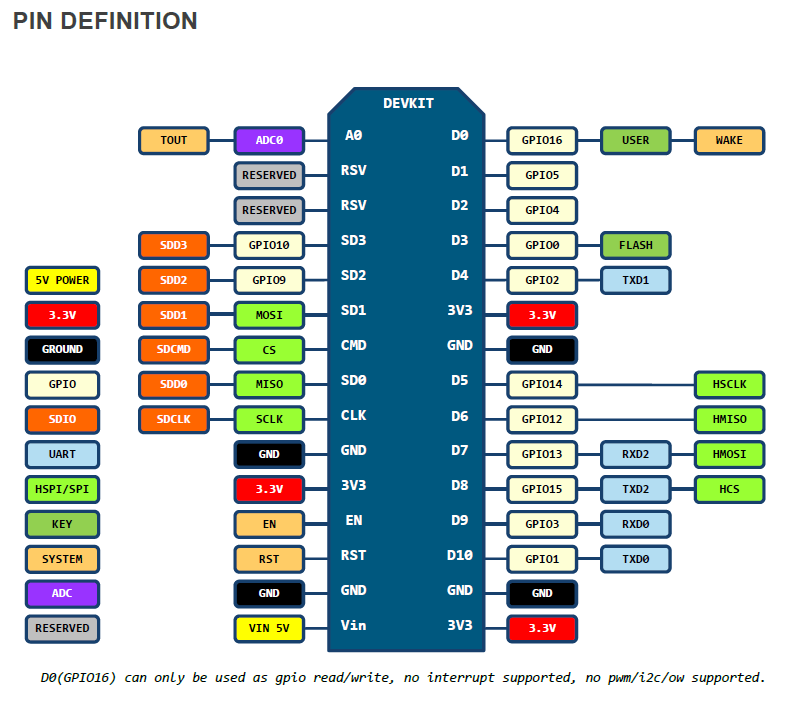This article describes the Seeeduino XIAO development board
The general specifications of the card are
| Characteristic | Value |
|---|---|
| CPU | ARM Cortex-M0+ CPU(SAMD21G18) running at up to 48MHz |
| Flash Memory | 256KB |
| SRAM | 32KB |
| Digital I/O Pins | 11 |
| Analog I/O Pins | 11 |
| I2C interface | 1 |
| SPI interface | 1 |
| UART interface | 1 |
| Power Led | Green |
| Test Led | Yellow |
| TX Serial Led | Blue |
| RX Serial Led | Blue |
| Power supply and downloading interface | USB Type C |
| Supply Voltage | 3.3V/5V DC |
| Dimensions | 20×17.5×3.5mm |
As shown in the table, peculiar aspects of the board are the following
- Powerful CPU: ARM® Cortex®-M0+ 32bit 48MHz microcontroller(SAMD21G18) with 256KB Flash,32KB SRAM.
- Compatible with Arduino IDE and CircuitPython.
- Breadboard-friendly.
- As small as a thumb(20×17.5mm) for wearable devices and small projects.
- Multiple development interfaces: 11 digital/analog pins, 10 PWM Pins, 1 DAC output, 1 SWD Bonding pad interface, 1 I2C interface, 1 UART interface, 1 SPI interface.
Here are the links to the Seeed wikis for configuration with Arduino and CircuitPython
Seeeduino XIAO with IDE Arduino
Seeeeduino XIAO with CircuitPython
CircuitPython is a simplified Micropython derived project for microcontrollers
The board is programmed via USB Type C connection. It also offers a pad for power supply as well as the SWD (Serial Wire Debug) interface in the back part.
The board supports multiplexing pin and the same pin can be used,depending on the function that uses it, as analog, digital pin, etc.
On the upper part of the board there are two pins for resetting the board itself and for setting it in dfu mode for loading another bootloader (for example CircuitPython).
To reset or load another bootloader, connect the board via USB Type C and reset it by short-circuiting quickly the reset pins. When the orange LED starts to light up and flicker, the board is ready to load the firmware. Use this method even if the board is no longer visible on the USB port of the PC.
The board is available directly from the Seeed website
In the next articles we set up the Arduino IDE for a small project with Seeeduino XIAO
Seeeduino XIAO – Arduino envinronment
About Seeed
Seeed is the IoT hardware enabler providing services over 10 years that empower makers to realize their projects and products. Seeed offers a wide array of hardware platforms and sensor modules ready to be integrated with existing IoT platforms and one-stop PCB fabrication and PCB assembly service. Seeed Studio provides a wide selection of electronic parts including Arduino Raspberry Pi and many different development board platforms Especially the Grove System help engineers and makers to avoid jumper wires problems. Seeed Studio has developed more than 280 Grove modules covering a wide range of applications that can fulfill a variety of needs.











